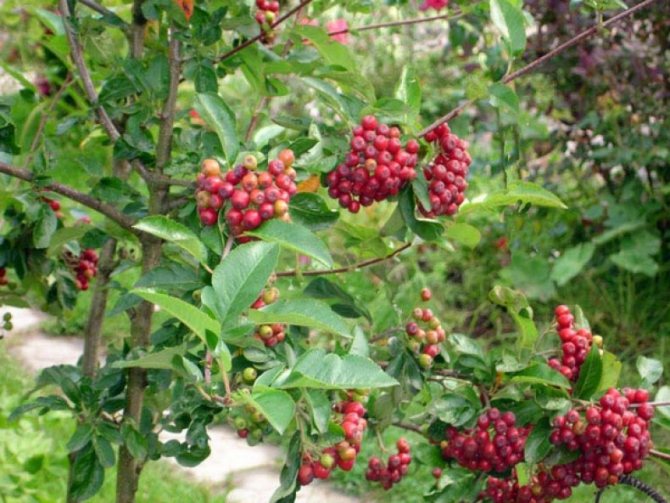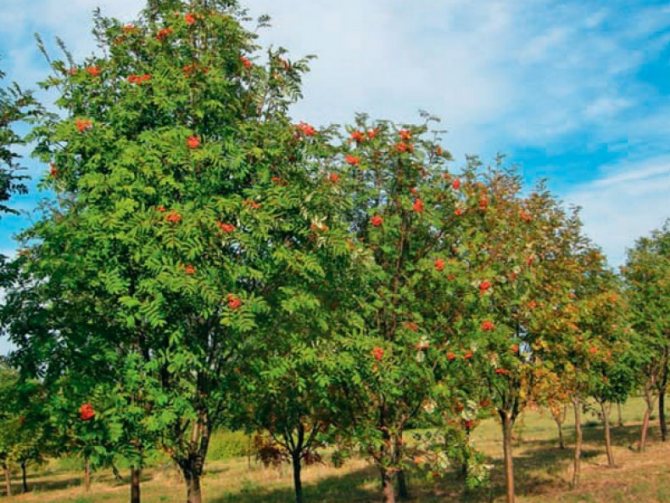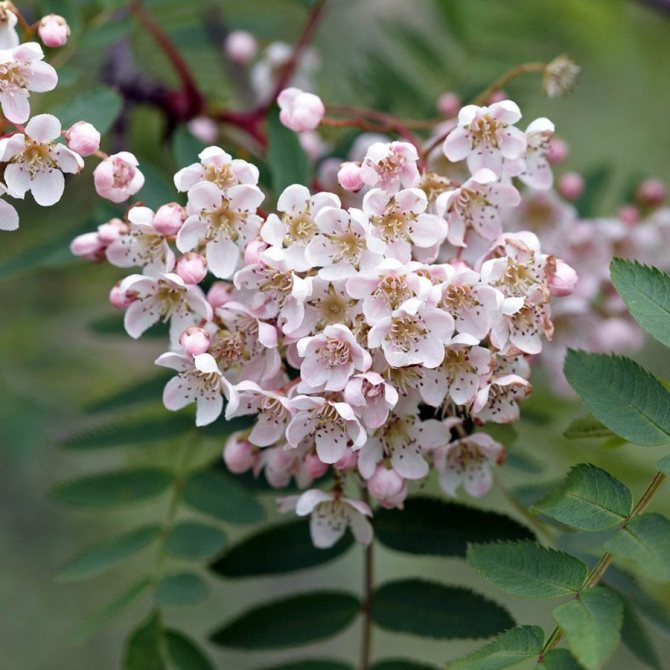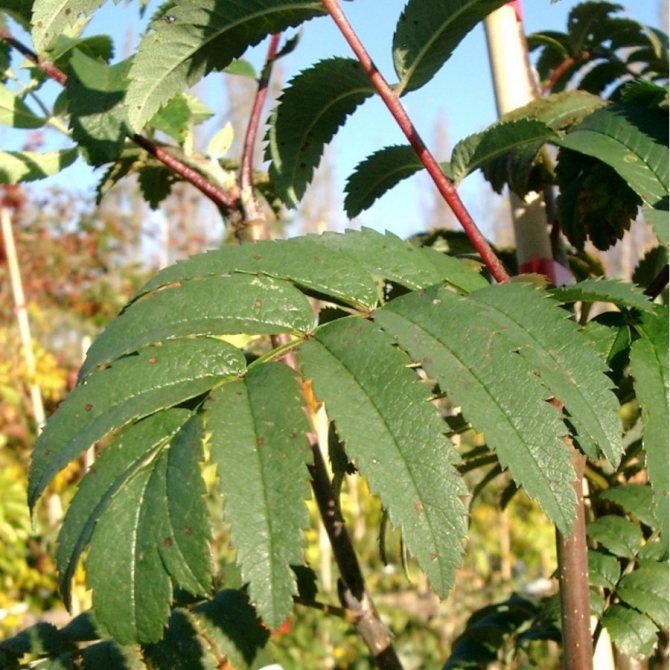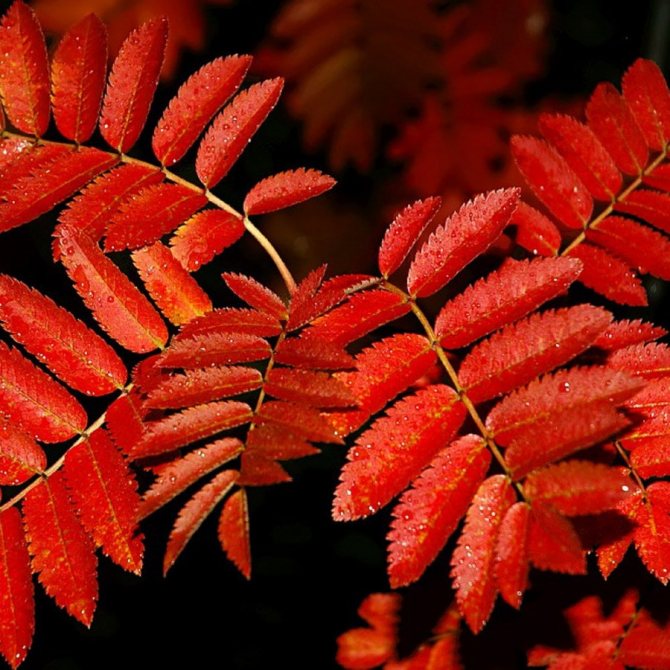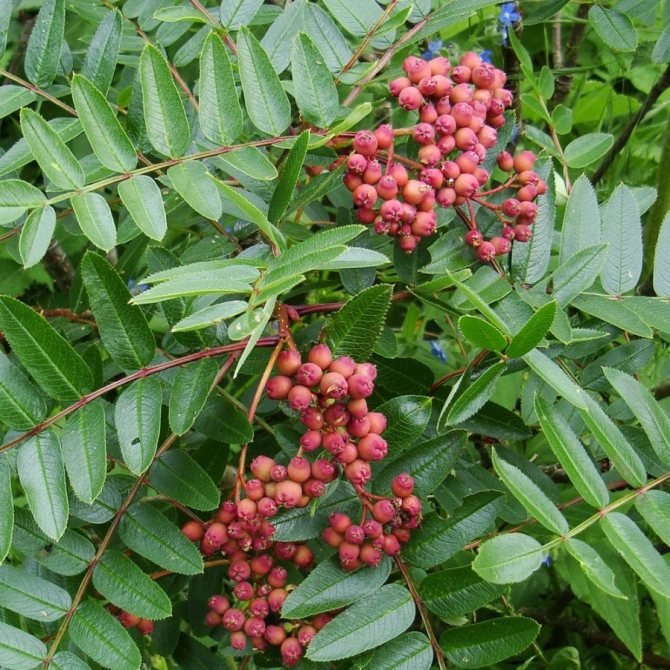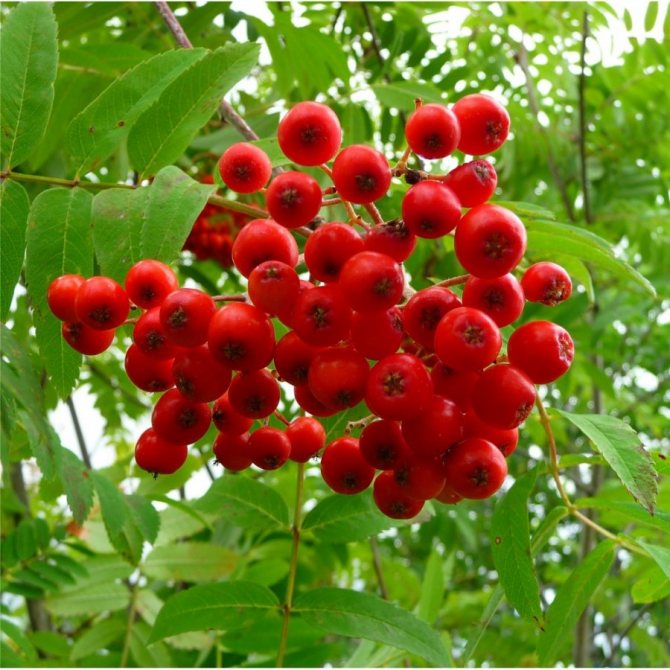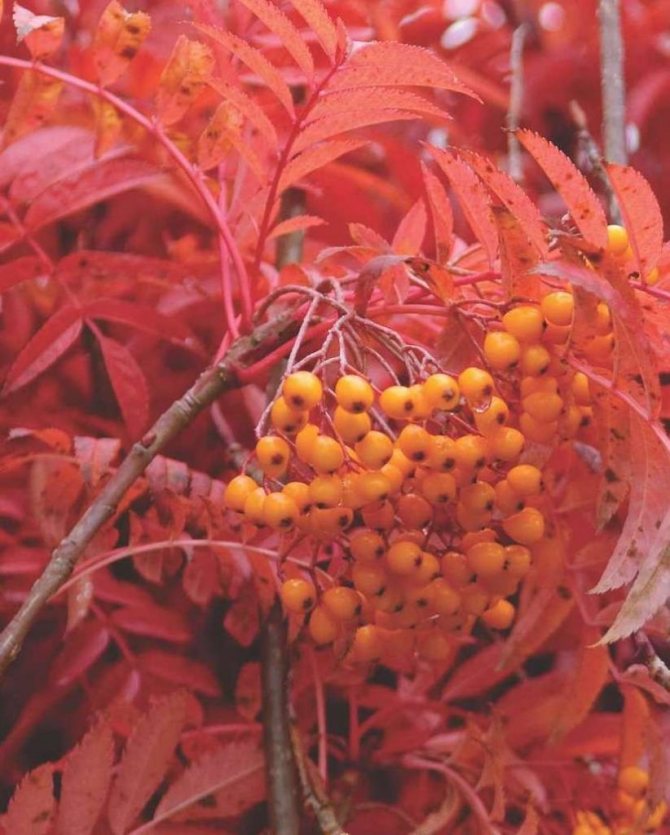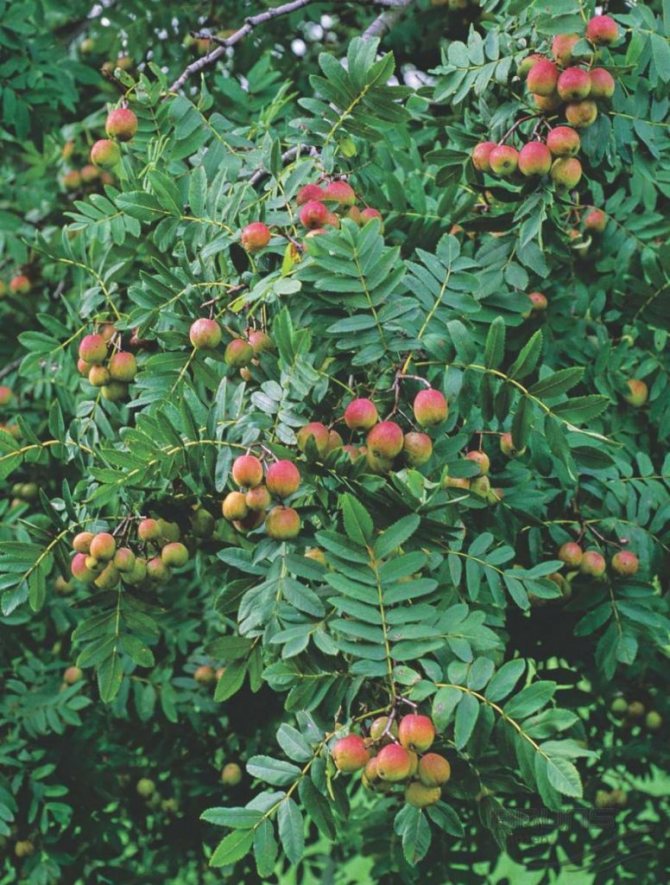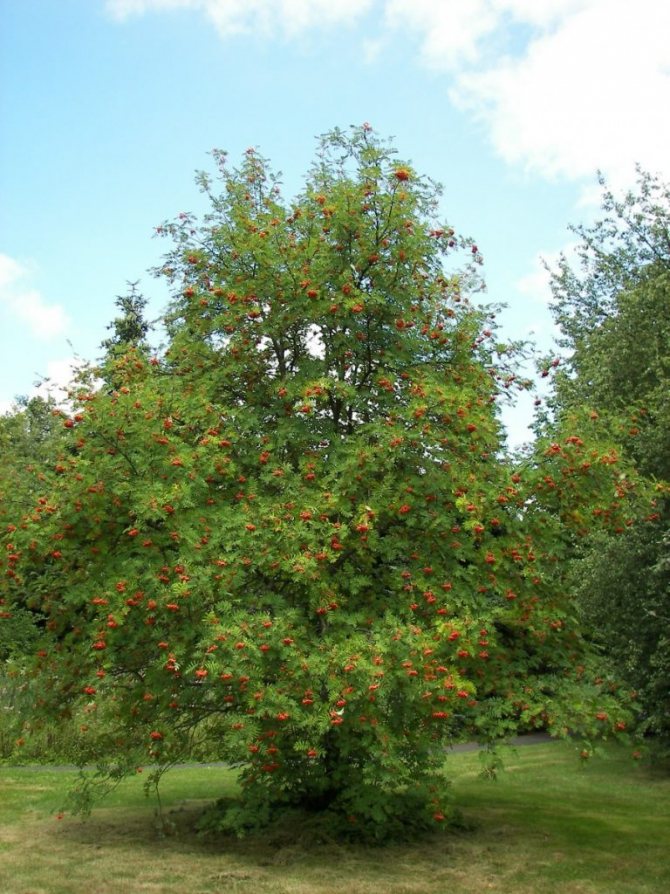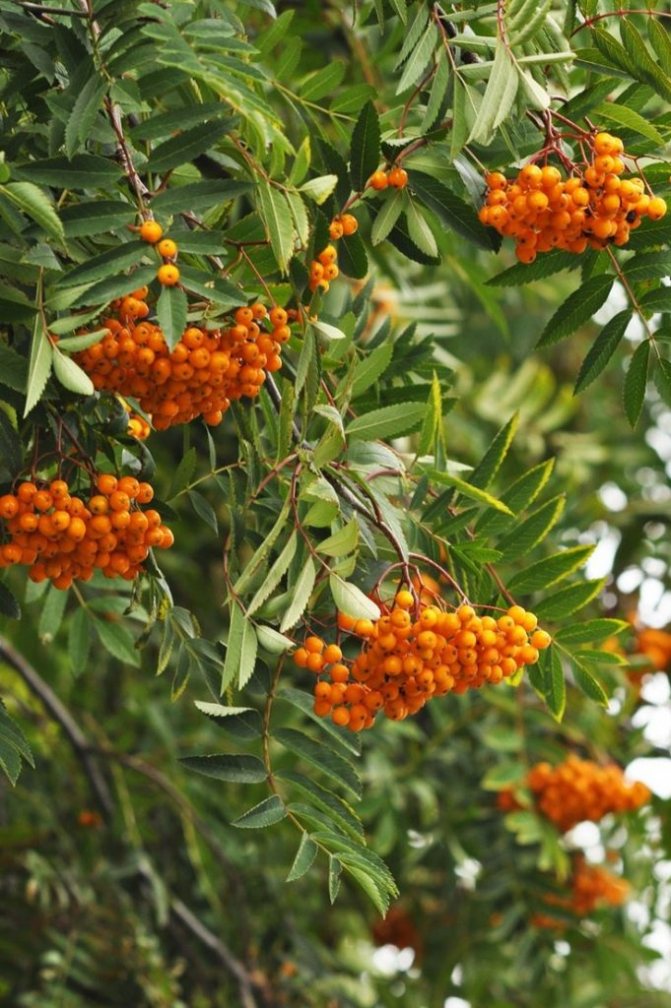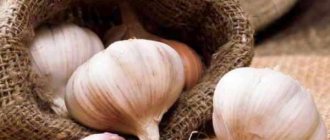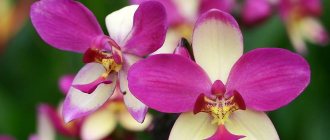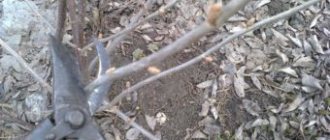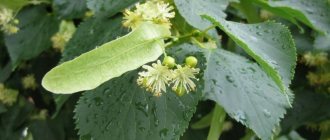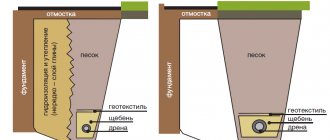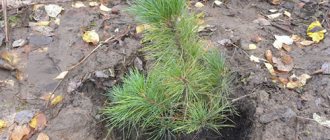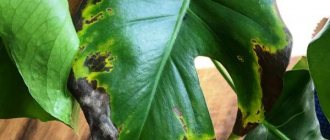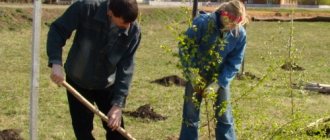Many gardeners who do not have the practice of growing mountain ash have doubts about the need to prune a tree, because there are many clear examples that mountain ash can grow and bear fruit without anyone's participation. It should be noted that mountain ash is also a fruit tree and it needs pruning to increase the yield of berries. And if rowan is grown exclusively for decorative purposes, then a beautifully formed tree will only decorate the garden plot.
In addition, timely and correct pruning of mountain ash is the prevention of diseases that have such consequences as a decrease in yield and decorativeness of the tree.
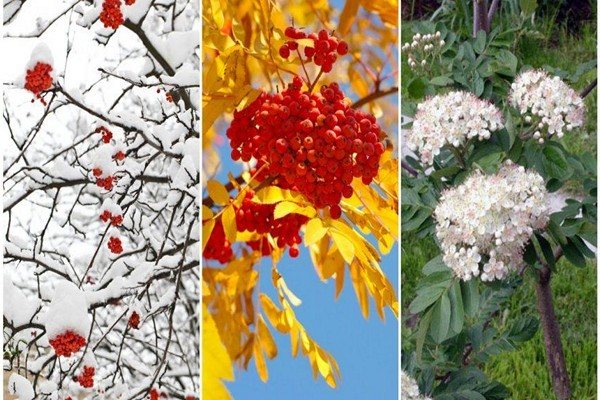
Dates of autumn planting
The autumn planting time is determined by the climate of the area where the mountain ash will grow:
- In the central region, the best period will be mid-September - mid-October.
- In southern latitudes, it is best to plant rowan from early October to early November.
- In the northern regions, the entire September - early October will be an acceptable period.
- For Siberia and the Urals, autumn planting is most suitable, because spring in these areas is not stable, there is a risk of frost or, on the contrary, extreme heat. At the same time, autumn runs with a comfortable temperature regime and sufficient rainfall.
Rowan, like other trees, is recommended to be planted after leaf fall.
If the planting dates were missed, then the seedling must be saved until spring. In this case, use one of the three existing methods:
- Basement storage:
- The roots of the seedling are dipped into a container with wet peat, sand and sawdust.
- The room should have comfortable conditions (air temperature from 0 to +10 degrees and 85-90% humidity)
- Once a week, the root system is additionally moistened.
- Digging in:
- A deep hole is dug on the site and the roots of the seedling are placed there at an angle of 45 degrees.
- Then it is buried using a moistened mixture of sand and peat.
- Snowing:
- The seedling must be wrapped with a damp cloth and buried in this state in the snow. In this case, the optimum temperature for it will be maintained.
Using the latter method, you need to ensure that the seedling does not bare, and the layer of snow always remains thick.
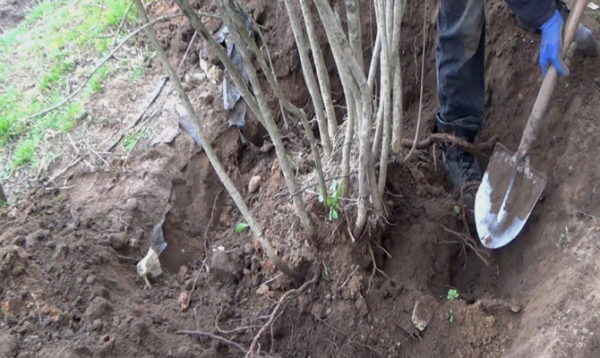

Preparing rowan for planting
Outcome
To obtain a bountiful harvest of chokeberry, it is necessary to carry out regular pruning of branches, since the plant belongs to light-loving crops. The thickening deprives the mountain ash of light, which leads to a significant decrease in yield. Chokeberry pruning is carried out in autumn or spring, and sometimes twice a year. First of all, remove all old branches that do not bear fruit well. Then the damaged branches and the tops of healthy branches are cut to stimulate the growth of lateral shoots with berry buds.
Aronia can also be used as an ornamental plant to decorate hedges, paths in the garden and the porch of the house. It is frost-resistant, unpretentious, multiplies quickly. For wintering, the plant does not require special shelter, since Aronia Michurina can withstand frosts down to -40C. The roots of the shrub are mulched with organic matter and covered with an additional layer of earth. Regular pruning of branches is the key to a splendid crown and a good harvest in the fall.Well-groomed Aronia will delight the eye for many years with its decorative look.
Pros and cons of autumn planting
- In the fall, you can buy seedlings at a reduced price.
- Also, during this period, the planting material will be fresh, so you can appreciate its health and condition, both foliage and root system.
- Planting in autumn will be much less of a hassle, and the grower will be relieved of the need to constantly check the soil moisture level. Nature will do all the work for him.
- Young trees planted this season will start to grow 2-3 weeks earlier than with spring planting.
- Also, many summer residents are attracted by the prospect of saving time. In the fall, there are not many things to do in the garden, which cannot be said about the spring period, when there will be a lot of trouble.
- Due to winter frosts, both the root system and the tree itself can freeze.
- Also, strong winds can affect the health of red mountain ash, which will break off young branches.
- Another disadvantage is considered to be the attacks of rodents, which can damage the tree in late autumn.
Success secrets
Rowan ordinary can grow in partial shade, but in illuminated areas it grows, blooms and bears fruit much more actively. It is best to place plants at the edge of the plot where they will not interfere with other crops.
Read more: Early maharach grape 372 firstborn
These trees are hygrophilous, but they are quite content with precipitation. Additional watering is needed only during particularly dry months.
Plants are fed from the age of three. In the spring, nitrogen fertilizers are applied to the soil, after harvesting, phosphorus-potassium fertilizers.
The minimum doses of fertilizers applied per one non-fertile tree / shrub during the year:
- Ammonium sulfate, 20.5% N - 200–500 g;
- Superphosphate, 18% P2O5 - 150-450 g;
- Potassium salt, 40% K2O - 200-400 g.
The minimum doses of fertilizers applied per one fruiting tree / shrub during the year:
- Ammonium sulfate, 20.5% N - 700-1400 g;
- Superphosphate, 18% P2O5 - 400–800 g;
- Potassium salt, 40% K2O - 450-900 g.
Maintenance activities include weed control, gentle loosening of the soil and removal of root growth. In addition, sanitary pruning is essential in early spring.
How to plant rowan - important rules
In order for the autumn planting to be successful and the mountain ash to take root in a new place, experienced gardeners recommend adhering to several basic rules:
- The planting material must be in perfect condition, if the roots begin to curl, then such a tree will take root worse and must be planted before the cold weather.
- If the seedling was purchased with a closed root system or a special net, then you do not need to get rid of them.
- If you miss the timing of the autumn planting, it is better to postpone the procedure to the spring.
- Do not overdo it with the amount of fertilizer applied.
You can not use manure as a top dressing, it can burn and damage the young root system.
- A small tree needs to be prepared for cold weather.
- It is advisable to tie the rowan planted in the fall to a support so that it does not sway and break during a strong wind.


Correctly planted rowan
Reproduction
Seeds, grafting, cuttings.
For cultivation of mountain ash, it is customary to use two methods: vegetative and seed. The species mountain ash is usually propagated by seeds. The preparation of seeds for sowing takes place in the fall.
- Ripe berries are selected, seeds are hulled out of them, thoroughly washed from the pulp and dried.
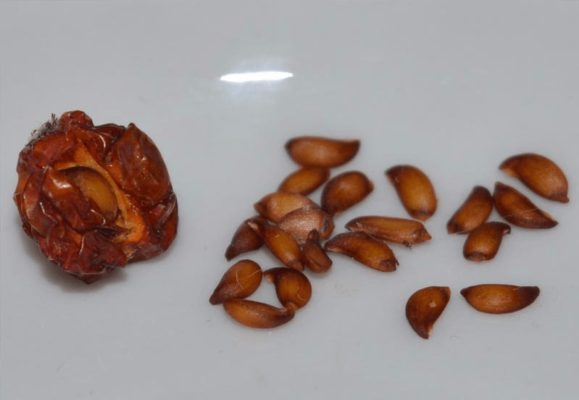

Rowan seeds need to be peeled and dried. - Then the seeds are sown into the ground to a depth of 10 cm and mulched with fallen leaves. You can sow seeds in the spring. It is important not to forget to start preparing them for sowing in advance.
- The preparation procedure is as follows: rowan seeds are mixed with coarse sand in a ratio of 1: 3.
- The resulting mixture is kept for 6–8 weeks at room temperature.
- For the next 2–4 months, the seeds with sand are stored in the refrigerator, placed in a vegetable drawer.
- Sowing is done after the snow melts. You can sow seeds in a greenhouse or special boxes. Until autumn, the seedlings remain in one place, they are watered, periodically weeded, loosened the soil. In the fall, seedlings are transplanted into a mini-garden (the so-called school).
- Saplings obtained from seeds begin to yield in the 4th or 5th year.
Valuable rowan varieties are usually propagated vegetatively. For this, grafting, shoots or layering, green or lignified cuttings are used. A common mountain ash tree can become traditional rootstocks for grafting. Budding (grafting) is carried out in April, when sap flow begins. If the spring dates are missed, then budding can be carried out in late July - early August. The dressing is removed from the vaccination site after 20-25 days.
How to plant rowan in autumn?
Autumn planting differs from spring planting in many respects. In order for the mountain ash, planted before the onset of cold weather, to take root in a new place and grow well, you must adhere to the time-tested rules.
Selection of seedlings
Before you start planting, you need to purchase a quality seedling.
- The root system should be moist, without visible damage, with 3-4 main branches and a length of 25-30 centimeters.
- The presence of shriveled bark indicates that the planting material has been overdried.
- The crown must also be well developed, the presence of the main conductor and main branches is very important.
During transportation, the roots of the seedling are wrapped with a damp cloth and placed in a plastic bag.
Preparing a seedling for planting:
- Before planting, it is necessary to remove all dry and damaged branches, the same rule applies to the roots of the tree.
- For the best moisture, the root system of the seedling is placed in a clay mash for 2-3 hours.
In order for all the strength of the tree to go to growth and survival in a new place, it is necessary to remove all green foliage.


Rowan seedlings ready to plant
Selecting and preparing a site for planting or replanting a tree
Rowan is famous for its unpretentiousness and the ability to take root on various soils. But in order for the tree to grow and bear fruit better, the following conditions are met:
- The best option would be loamy or sandy loam soil.
- The soil should be loose and neutral; expanded clay drainage is encouraged.
- Rowan is very fond of sunlight, so it is better to choose an area that is not shaded.
- The soil must be well moistened.
- It is desirable that the groundwater level be below 1.5 meters, but mountain ash also tolerates a closer location.
Rowan is planted at a distance of 4-5 meters from other trees. Approximately 2-3 weeks before planting the seedling, it is necessary to prepare the planting hole, it should have time to infuse.
- The depth of the pit is 40-50 centimeters, the width will depend on the size of the root system of the seedling.
- The fertile soil layer is mixed with:
A bucket of compost or humus;
150 grams of superphosphate;
300 grams of wood ash.
- The resulting mixture is poured into one third of the pit.
- Then half of it is filled with barren soil.
Planting rowan in open ground:
- Before planting, a bucket of water is poured into the prepared hole and wait until it is absorbed.
- Then a seedling is placed there, which needs to be carefully spread out the roots.
- The root collar should be 5-7 centimeters above ground level.
- When filling the hole, it is recommended to lightly shake the tree to fill all air pockets.
- After the rowan is planted, the soil around the tree trunk is carefully tamped and watered thoroughly.
- At the final stage, you need to mulch the tree trunk circle with humus or peat.


Watering rowan trees immediately after planting
Care after landing
In order for a tree to form correctly and grow strong and healthy, it must be properly looked after in the first years of life. To do this, adhere to the following rules:
- The first 2-3 years the mountain ash is not fertilized, because it will have enough nutrients introduced during planting. An exception will be nitrogen fertilizers that stimulate tree growth. They can be made from 2 years of planting.
- During watering, 2-3 buckets of water are consumed per rowan. The tree is watered 4-5 times per season; in the presence of abundant summer rainfall, only spring and autumn watering can be left. After each application of moisture, the soil must be mulched.
Rowan is watered along the furrows or using special grooves.
- In the autumn, the soil around the trunk is dug to a depth of 10-15 centimeters. Throughout the season, the ground near the tree should be kept clean and loose.
Seat selection
Tall varieties are placed around the perimeter of the site, otherwise the tree will shade other plants. Since mountain ash is winter-hardy, the northern side is often allocated for it.
The plant tolerates shade and sun equally well, loves wet areas, but the occurrence of groundwater should not exceed 1 m.
The best soil for mountain ash is a fertile loam that retains water for a long time, although the tree also grows on less nutritious soils. It develops poorly on alkaline soil, sandy loam must be fertilized. Acidic soils alkalize - you will need from 200 g to 1 kg of lime or dolomite flour.
How to prepare red rowan for winter
A newly planted tree will not have time to fully grow stronger before the onset of cold weather, so it needs help to cope and survive the cold. To do this, the gardener must follow these steps:
- Rowan trunk is wrapped in burlap, after which the structure is insulated with spruce branches.
- The lower part of the trunk needs additional protection, so it needs to be buried with fallen snow and make sure that its amount does not decrease and does not expose vulnerable areas.
- For, to avoid sunburn, the rowan trunk must be whitewashed.
- Protection from rodents can be provided by special pesticides that are scattered around the tree.
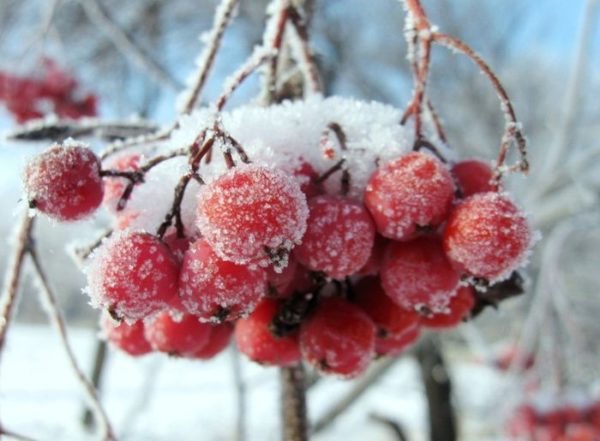

Rowan berries left for the winter not picked
https://youtu.be/8gaDlgvyLqE
What are the fruits of mountain ash rich in and what is prepared from it
Red rowan berries contain carotene, ascorbic acid, vitamin P, calcium phosphorus, iron, iodine, sorbitic acid. But, since our article is not on a medical topic, we will just make do with a short list of the elements listed above.
From the fruits of mountain ash, jams, marmalades, marshmallows are prepared. Dry berries are part of the medicinal vitamin charges, and fresh compote promotes bile secretion. Pickled berries are a good seasoning for game dishes.
Rowan ordinary (red) is a type of mountain ash, belonging to the family pink, the height of this fruit tree is 5-12 meters, long green dull leaves, consisting of 7-15 leaves, grow up to 20 cm, large white inflorescences exude an unpleasant odor, and orange-red, juicy fruits, ripening in August-September, hang on the branches before winter. It is known as a vigorous, durable, frost- and drought-resistant, popular medicinal (containing vitamins, trace elements, carotene, organic acids), ornamental plant, which is not very demanding for growing conditions. Let's figure out how to properly organize red rowan planting and care at their summer cottage.
Care
Further care of mountain ash consists in timely weeding, removal of rootstock growth, watering, loosening the earth and feeding... Rowan care also involves caring for the trunk circle. It must be kept under black steam. In addition, it will be good if you mulch it with something (needles, straw, dry grass).
Watering
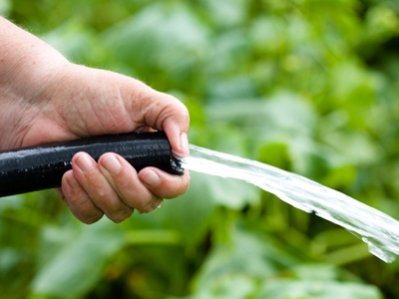

Experienced gardeners advise to water well so that a puddle appears in the near-stem circle.
Pruning
Pruning is an important element of care. Pruning the tree is done so that it is most evenly illuminated. This has a positive effect on the quality and quantity of the crop.
The mountain ash has a pyramidal crown and branches extending from the trunk at an acute angle. This has a bad effect on their strength. Therefore, when forming the main skeletal branches, it should be done so that they come out at a right or obtuse angle. In young trees, the shoots are slightly shortened to the outer bud and shoots that depart at an acute angle, as well as excess shoots, are removed.
You need to cut rowan in early spring, when the buds are not yet swollen.
Rejuvenating (light) pruning on mountain ash is done when the growth decreases to 10-15 cm, and the yield remains the same. The branches should be thinned and shortened slightly.
Strong pruning is required when the growth is completely reduced or up to 5 cm.
If several varieties are grafted onto the mountain ash, then it needs to shorten the semi-skeletal branches. During a high harvest, the smallest branches, called ringlets, should be thinned out.
Scarlet large
Variety bred by the Central Genetic Laboratory. Michurin (today the All-Russian Research Institute of Genetics and Breeding of Fruit Plants). An interesting, very effective plant, with really large fruits for a red-fruited mountain ash.
Variety characteristics:
- The height of the tree is 5 meters. Crohn of medium density, wide pyramidal shape. Poorly pubescent straight shoots with gray-brown bark and many large lentils.
- Leaves are dark green, with broad lanceolate plates, shiny.
- Wide scutes with a large number of flowers.
- Fruits from 1.7 to 2.5 grams, slightly ribbed, juicy. Scarlet skin, spicy taste, somewhat sour than other varieties, without bitterness. The appointment is dining and technical.
The variety is able to withstand extreme frosts down to -50⁰С. Resistant to diseases and pests.
Large mountain ash variety Alai is capable of withstanding extreme frosts down to -50⁰С
| The chemical composition of the fruit | |
| Sugar | 8,4% |
| Organic acids | 1,9% |
| Vitamin C | 21 mg / 100 g |
| Anthocyanins | 625 mg / 100 g |
Pruning in winter
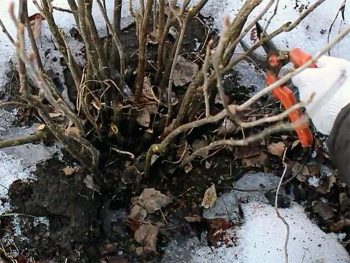

Rowan pruning in 2-3 ten days of February
Rowan pruning can be started as early as February, provided that severe frosts are not expected. They begin to cut two to four year old trees that are more resistant to February frosts, and young ones, more sensitive to low temperatures, are best left until mid-end of March. At the end of winter, you can start by pruning pear and apple trees. Somewhat later, apricots, peaches, plums and nectarines are trimmed. It is worth noting that young trees are recommended for winter pruning, and for an elderly mountain ash, summer will be a more suitable period, since this will reduce the risk of infection.
Certain varieties of mountain ash, which are most susceptible to bark and wood diseases, are pruned only in summer. Or the trees are pruned after the harvest. Pruning in winter should be done in moderation without causing the trees to grow too much and the risk of infection is too high.
Tip # 2. Pruning trees in late autumn is not recommended, because the wounds after cutting do not have time to heal before winter, and can cause mountain ash to freeze.


